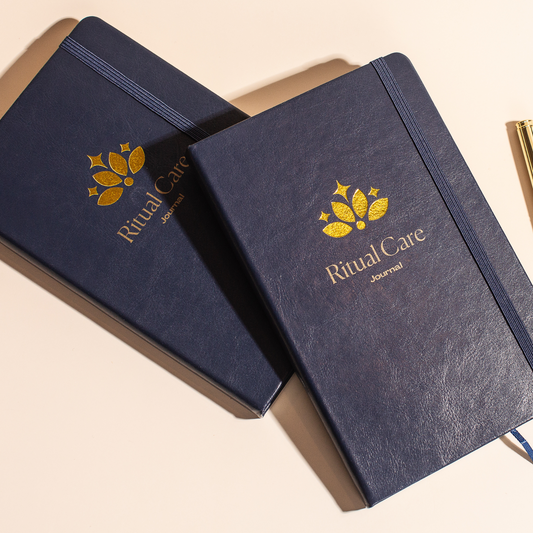We all face stress at work. No matter what kind of job you have, every day brings minor hassles such as traffic jams, boring commutes, computer breakdowns, short-tempered clients, sensory overload, and tight deadlines. Sometimes you barely notice you’re living with chronic stress because you’ve learned to adapt to it. Feeling tired, distracted, irritated, and plagued by a nagging sense that time is running out starts to feel normal. You shrug off the way life keeps speeding up and accept that work pressures are necessary to get ahead in your career. Yet living in a state of overdrive is anything but normal, and it actually causes more harm than you may realize.
Evolution didn’t equip you to live in a constant state of stress. Instead, your fight-or-flight response evolved to help you survive temporary, immediate threats, such as an attack by a wild animal. When your stress response is triggered, your heart rate and blood pressure increase, your blood sugar rises, and your immune system is suppressed. At the same time, your digestion is temporarily halted and your breathing accelerates. All of these reactions take place instantly so that your body is prepared to fight off the threat or run away as fast as possible. Although few people reading this face daily threats to their bodily existence, many live in a prolonged state of fight or flight, generating chronic stress in response to everyday hassles such as a long commute or a delayed flight.
Once the full-blown stress response is activated, there is little you can do to override it because the hormones being secreted, such as cortisol and adrenalin, latch on the specific receptors on cell membranes and trigger a chain of unstoppable events inside of cells. For example, in bone marrow, chronic stress can cause immune cells to promote inflammation, a process that begins with changes at the level of genes. If you are exposed to a certain stressor, such as a loud coworker, every day, chronic inflammation can develop and ultimately lead to chronic illnesses. Unlike the swelling, redness, and discomfort of acute inflammation, which you experience when you sprain an ankle or burn your skin, chronic inflammation causes few, if any symptoms. Since symptoms are not always expressed, it has taken medical science decades to track down chronic inflammation as an invisible culprit in many chronic and widespread diseases.
While research about the precise biochemical links between chronic stress and chronic inflammation is ongoing, we already know that these two factors are massive contributors to reduced immunity and the development of what are called “lifestyle disorders.” This relatively new term refers to those diseases that you have the power to prevent or heal through the choices you make about your lifestyle every day. As genetic researchers have discovered, only 5 percent of disease-related gene mutations are fully penetrant, which means that having the gene guarantees that we will get the disease. Through your daily lifestyle choices, you have an incredible ability to influence the expression of the other 95 percent of disease-related gene mutations, including genes for Alzheimer’s disease, heart disease, diabetes, and many types of cancer.
In short, your future health is not predetermined by your genes but it is overwhelmingly shaped by the choices you make every day. This is why it’s so important to create a healing lifestyle, which includes eliminating the accumulation of everyday stress and practicing self-care at work and home. Here are a few simple practices to help you release chronic stress and experience your natural state of wellness and vitality.
You don’t have to be an advanced meditator to benefit from meditation. A recent study conducted at the Chopra Center found that after a six-day meditation retreat, new meditators experienced significant improvements in immune function, reduction of depressive symptoms, and the suppression of stress-related responses such as inflammation lasting 10 months after the retreat.
You also don’t need to meditate for hours to benefit from the practice. Even if you meditate for just 5 to 10 minutes each day, you will receive many healing benefits. Here is a simple So Hum mantra meditation practice that you can try right now.
You may think that you’re multitasking when you’re checking your text messages while listening to your spouse, but your attention is actually jumping very quickly from task to task, sequentially. Researchers at Stanford have found that people who multitask are actually less productive than those who focus on a single thing at a time—and they have more trouble organizing their thoughts, recalling information, and filtering out irrelevant data. In fact, multitasking is the one thing that gets worse with practice: the more you do it, the worse you get.
The solution is simple: Do one thing at a time and then move on to the next. This can take practice, yet as you set your intention to stay focused on what you are doing right now, you will find yourself improving. Keep in mind that meditation is a powerful way to develop this one-pointed attention.
Meditation helps you to train your brain to stay focused on the task at hand rather than letting your attention be pulled away by every passing thought and distraction. This one-pointed attention makes you more productive and less stressed.
S: Stop what you are doing.
T: Take a few deep breaths.
O: Observe the sensations in your body and smile.
P: Proceed with awareness and compassion.
STOP creates a valuable “pause button” in your life. As you put this into practice and create a habit of it, your brain will create neural networks for automatically repeating it, and you can break the stress cycle. For example, when the phone rings, instead of rushing to answer, stop, take a few deep breaths, and then proceed with awareness and compassion. You will feel more present and calm, and the person on the other end of the line will feel it too.
As you begin making simple, practical changes in your daily life—at work and at home—you will positively impact the expression of your genes, reducing your risk of disease as you fulfill your deepest potential for health and happiness.
Find balance anywhere, anytime with the new Chopra App. Download it now for hundreds of personalized guided meditations at your fingertips.
*Editor’s Note: The information in this article is intended for your educational use only and is not a substitute for professional medical advice, diagnosis, or treatment. Always seek the advice of your physician or other qualified health providers with any questions you may have regarding a medical condition and before undertaking any diet, supplement, fitness, or other health programs.
Chronic Stress and Inflammation
Chronic, low-grade stress and the inflammation associated with it, are underlying factors in most chronic illnesses, including cardiovascular disease, type 2 diabetes, metabolic syndrome, obesity, autoimmune disorders, Alzheimer’s, asthma, arthritis, and many types of cancer. Chronic stress and inflammation are all the more dangerous because it can take years or even decades before the first symptoms of disease appear.Evolution didn’t equip you to live in a constant state of stress. Instead, your fight-or-flight response evolved to help you survive temporary, immediate threats, such as an attack by a wild animal. When your stress response is triggered, your heart rate and blood pressure increase, your blood sugar rises, and your immune system is suppressed. At the same time, your digestion is temporarily halted and your breathing accelerates. All of these reactions take place instantly so that your body is prepared to fight off the threat or run away as fast as possible. Although few people reading this face daily threats to their bodily existence, many live in a prolonged state of fight or flight, generating chronic stress in response to everyday hassles such as a long commute or a delayed flight.
Once the full-blown stress response is activated, there is little you can do to override it because the hormones being secreted, such as cortisol and adrenalin, latch on the specific receptors on cell membranes and trigger a chain of unstoppable events inside of cells. For example, in bone marrow, chronic stress can cause immune cells to promote inflammation, a process that begins with changes at the level of genes. If you are exposed to a certain stressor, such as a loud coworker, every day, chronic inflammation can develop and ultimately lead to chronic illnesses. Unlike the swelling, redness, and discomfort of acute inflammation, which you experience when you sprain an ankle or burn your skin, chronic inflammation causes few, if any symptoms. Since symptoms are not always expressed, it has taken medical science decades to track down chronic inflammation as an invisible culprit in many chronic and widespread diseases.
While research about the precise biochemical links between chronic stress and chronic inflammation is ongoing, we already know that these two factors are massive contributors to reduced immunity and the development of what are called “lifestyle disorders.” This relatively new term refers to those diseases that you have the power to prevent or heal through the choices you make about your lifestyle every day. As genetic researchers have discovered, only 5 percent of disease-related gene mutations are fully penetrant, which means that having the gene guarantees that we will get the disease. Through your daily lifestyle choices, you have an incredible ability to influence the expression of the other 95 percent of disease-related gene mutations, including genes for Alzheimer’s disease, heart disease, diabetes, and many types of cancer.
In short, your future health is not predetermined by your genes but it is overwhelmingly shaped by the choices you make every day. This is why it’s so important to create a healing lifestyle, which includes eliminating the accumulation of everyday stress and practicing self-care at work and home. Here are a few simple practices to help you release chronic stress and experience your natural state of wellness and vitality.
Meditate
The number-one stress reduction tool I recommend is meditation. In meditation, you access a state of inner quiet that reverses the effect of the fight-or-flight response. Meditation has been shown to decrease blood pressure, hypertension, and insomnia, while also reducing the production of stress hormones, including cortisol and adrenaline. At the same time, meditation triggers the brain to release naturally occurring chemicals that enhance your well-being, focus, and feelings of calm, including dopamine, serotonin, and endorphins. Meditation also increases the production of DHEA, an anti-aging hormone. Meditation orchestrates the simultaneous release of all of these neurotransmitters, something that no single drug can do—and all without side effects.You don’t have to be an advanced meditator to benefit from meditation. A recent study conducted at the Chopra Center found that after a six-day meditation retreat, new meditators experienced significant improvements in immune function, reduction of depressive symptoms, and the suppression of stress-related responses such as inflammation lasting 10 months after the retreat.
You also don’t need to meditate for hours to benefit from the practice. Even if you meditate for just 5 to 10 minutes each day, you will receive many healing benefits. Here is a simple So Hum mantra meditation practice that you can try right now.
Focus on One Thing at a Time
Many people feel stressed because they’re trying to do more than one thing at a time, thinking that it will help them be more productive. However, research in neuroscience shows that the conscious mind cannot multitask, defined here as the ability to pay attention to more than one mental input at a time.You may think that you’re multitasking when you’re checking your text messages while listening to your spouse, but your attention is actually jumping very quickly from task to task, sequentially. Researchers at Stanford have found that people who multitask are actually less productive than those who focus on a single thing at a time—and they have more trouble organizing their thoughts, recalling information, and filtering out irrelevant data. In fact, multitasking is the one thing that gets worse with practice: the more you do it, the worse you get.
The solution is simple: Do one thing at a time and then move on to the next. This can take practice, yet as you set your intention to stay focused on what you are doing right now, you will find yourself improving. Keep in mind that meditation is a powerful way to develop this one-pointed attention.
Meditation helps you to train your brain to stay focused on the task at hand rather than letting your attention be pulled away by every passing thought and distraction. This one-pointed attention makes you more productive and less stressed.
Practice the STOP Technique
Whenever you find yourself getting irritated about something at work or on the verge of reacting in a knee-jerk way you may later regret, take time to STOP, which is an acronym:S: Stop what you are doing.
T: Take a few deep breaths.
O: Observe the sensations in your body and smile.
P: Proceed with awareness and compassion.
STOP creates a valuable “pause button” in your life. As you put this into practice and create a habit of it, your brain will create neural networks for automatically repeating it, and you can break the stress cycle. For example, when the phone rings, instead of rushing to answer, stop, take a few deep breaths, and then proceed with awareness and compassion. You will feel more present and calm, and the person on the other end of the line will feel it too.
Other Ways to Reduce Chronic Stress
There are other vital keys to releasing and preventing the accumulation of chronic stress and inflammation, including eating an anti-inflammatory diet rich in whole, fresh foods; doing regular physical activity; spending time outdoors; getting enough sleep; and cultivating healthy emotions such as gratitude, compassion, and joy.As you begin making simple, practical changes in your daily life—at work and at home—you will positively impact the expression of your genes, reducing your risk of disease as you fulfill your deepest potential for health and happiness.
Find balance anywhere, anytime with the new Chopra App. Download it now for hundreds of personalized guided meditations at your fingertips.
*Editor’s Note: The information in this article is intended for your educational use only and is not a substitute for professional medical advice, diagnosis, or treatment. Always seek the advice of your physician or other qualified health providers with any questions you may have regarding a medical condition and before undertaking any diet, supplement, fitness, or other health programs.






















